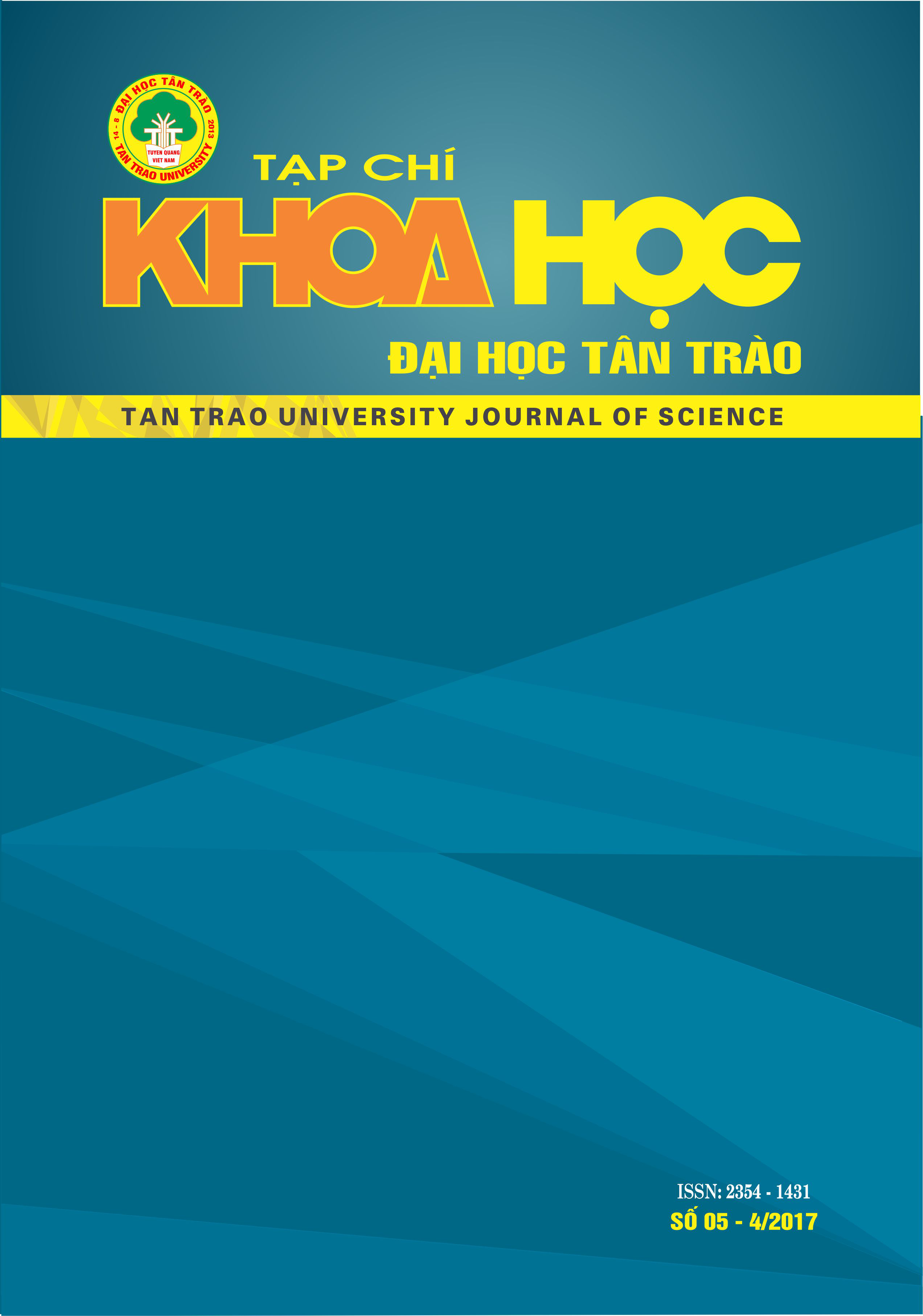TRỐNG ĐÔNG SƠN - BẰNG CHỨNG CỦA GIAO LƯU VĂN HÓA ĐÔNG SƠN VỚI CÁC NỀN VĂN HÓA Ở ĐÔNG NAM Á
DOI:
https://doi.org/10.51453/2354-1431/2017/131Từ khóa:
trống đồng; trống Äông SÆ¡n; Äông Nam Ã.Tóm tắt
Trống đồng nói chung và trống Đông Sơn nói riêng là di sản văn hóa độc đáo thu hút sự quan tâm nghiên cứu của nhiều học giả trong và ngoài nước. Vấn đề nguồn gốc, sự phân bố và phân loại trống đồng được các nhà nghiên cứu đặc biệt chú ý và đề cập khá nhiều trong các công trình nghiên cứu của mình. Căn cứ vào đặc điểm và hình dáng của trống đồng F. Heger đã phân chia thành bốn loại chính. Trong đó trống loại I (Heger I) có niên đại sớm nhất và được các nhà nghiên cứu đồng nhất với trống Đông Sơn. Những chiếc trống đồng Đông Sơn đã có mặt ở nhiều vùng đất xa xôi mà theo các nhà khảo cổ học của những nước Đông Nam Á thì những nơi này vào thời đó không đúc trống đồng mà trống đồng đem tới từ miền Bắc Việt Nam. Vì thế, việc có mặt trống Đông Sơn đây đó ở Đông Nam Á chắc chắn là do sự giao lưu của vùng đất này với cư dân Đông Sơn.
Tải xuống
Tài liệu tham khảo
1. Bellwood P. (1997), Prehistory of the Indo - Malaixian Archipelago. Hawaii.
2. Bùi Chí Hoàng, Nguyễn Văn Quốc, Nguyễn Khánh Trung Kiên (2010), Khảo cổ học Bình Dương (Từ Tiền sử đến Sơ sử). Nxb Khoa học xã hội, Hà Nội
3. Heger, F. (1902), Alte metalltramels aus sudost Asien. Leipzig.
4. Loofs-Wissowa H.H.E. (1981), Tiền sử và sõ sử Ðông Nam Á. Khảo cổ học số 1: 73-77.
5. Peacock B.A.V. (1965), The drums at Kampon Sungailang. MIN. Vol X
6. Phạm Minh Huyền, Nguyễn Văn Huyên, Trịnh Sinh (1987), Trống Đông Sơn. Nxb Khoa học xã hội, Hà Nội: 205;
7. Seng Sonetra, Reinecke A., Vin Laychour (2014), Bronze drums of the Dong Son culture in Southeastern Cambodia. The culture of Dong Son and the origin of Viet people. Workshop in Hanoi, October 8-10, 2014. A. Reinecke, Vin Laychour, Seng Sonetra 2009;
8. Soebadio H. et al.1996. Indonexian heritage: Ancient history. Jakarta. pp: 38-40;
9. Sorensen P. (1979), The Ongbah Cave and Its fifth drum. EAS. New York-Kualalumpur;
10. ThongLith Luangkhoth (2014), Giới thiệu sơ lược về những phát hiện văn hóa Đông Sơn tại huyện Sepon, tỉnh Sa vẳn Na Khệt, Cộng hòa Dân chủ Nhân dân Lào. The culture of Dong Son and the origin of Viet people. Workshop in Hanoi, October 8-10, 2014;
11. Trịnh Sinh (1998), A comment on the bronze drums discovered in Thailand. Comparative Thai -Vietnamese Archaeology: culture in Metal Age. Bangkok: 93-102: 93;
12. Trịnh Sinh (2014), Về nhóm trống Ðông Sõn mới phát hiện ở Sa Vẳn Na Khệt (Lào). Những phát hiện mới về khảo cổ học năm 2014: 217-220;
13. Van Heekeren H.R. (1958), The bronze-iron age of Indonexia. S-Gravenhage- Martinus Nijhoff;
14. Vallibhotama S. (1978), The Progress of research into the prehistory of Thailand. In: Muang Boran. Vol. IV: 55-72.
Tải xuống
Đã Xuất bản
Cách trích dẫn
Số
Chuyên mục
Giấy phép

Tác phẩm này được cấp phép theo Giấy phép Quốc tế Creative Commons Attribution-ShareAlike 4.0 .
Bài báo được xuất bản ở Tạp chí Khoa học Đại học Tân Trào được cấp phép theo giấy phép Ghi công - Chia sẻ tương tự 4.0 Quốc tế (CC BY-SA). Theo đó, các tác giả khác có thể sao chép, chuyển đổi hay phân phối lại các bài báo này với mục đích hợp pháp trên mọi phương tiện, với điều kiện họ trích dẫn tác giả, Tạp chí Khoa học Đại học Tân Trào và đường link đến bản quyền; nêu rõ các thay đổi đã thực hiện và các nghiên cứu đăng lại được tiến hành theo cùng một bản quyền.
Bản quyền bài báo thuộc về các tác giả, không hạn chế số lượng. Tạp chí Khoa học Tân Trào được cấp giấy phép không độc quyền để xuất bản bài báo với tư cách nhà xuất bản nguồn, kèm theo quyền thương mại để in các bài báo cung cấp cho các thư viện và cá nhân.
Mặc dù các điều khoản của giấy phép CC BY-SA không dành cho các tác giả (với tư cách là người giữ bản quyền của bài báo, họ không bị hạn chế về quyền hạn), khi gửi bài tới Tạp chí Khoa học Đại học Tân Trào, tác giả cần đáp ứng quyền của độc giả, và cần cấp quyền cho bên thứ 3 sử dụng bài báo của họ trong phạm vi của giấy phép.






